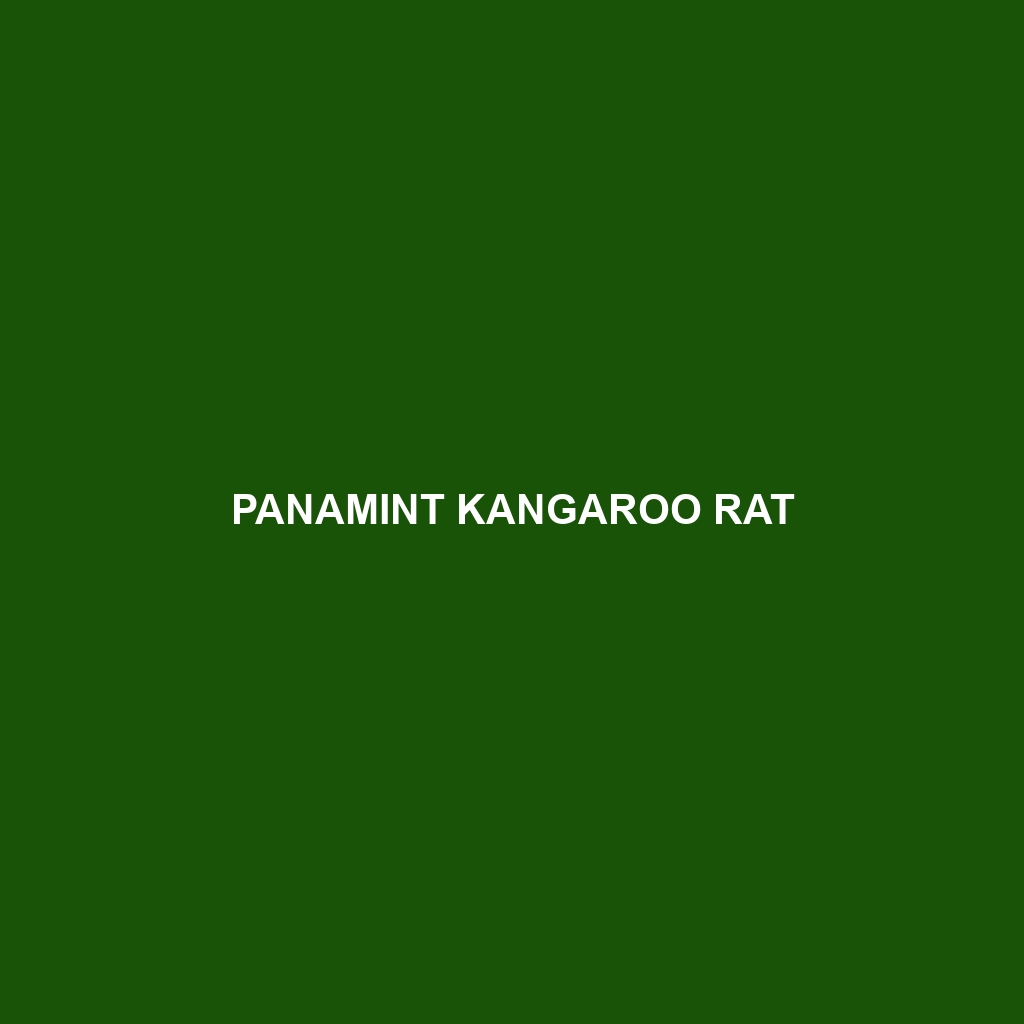Panamint Kangaroo Rat ()
Common Name: Panamint Kangaroo Rat
Scientific Name:
Habitat
The Panamint Kangaroo Rat is primarily found in the arid regions of California, particularly in the Panamint Mountains and surrounding areas. This fascinating species inhabits sandy washes and grasslands, thriving in environments characterized by sparse vegetation and low precipitation. The specific geographic locations include Death Valley National Park, where these animals have adapted to the challenging desert climate.
Physical Characteristics
Measuring approximately 9 to 11 inches in length, the Panamint Kangaroo Rat exhibits a distinctive appearance with a long, tufted tail that can be nearly twice the length of its body. Its fur is generally a light brown or sandy color, expertly camouflaging it against the desert landscape. Notable features include large hind feet, which are adapted for powerful jumping, and small forelimbs suitable for foraging.
Behavior
Panamint Kangaroo Rats are primarily nocturnal, allowing them to avoid the intense heat of the day. They are known for their remarkable jumping ability, which they use to escape predators and navigate the rugged desert terrain. These rodents communicate through a series of vocalizations and are often solitary, establishing territories that they defend against intruders. Their burrowing behavior creates intricate tunnel systems for shelter and foraging.
Diet
The diet of the Panamint Kangaroo Rat primarily consists of seeds, nuts, and vegetation found in its desert habitat. They are known to forage for food during the cooler nighttime hours and often store excess seeds in their burrows for future consumption. This species plays a crucial role in seed dispersion, contributing to the ecosystem’s health and stability.
Reproduction
Reproduction in the Panamint Kangaroo Rat typically occurs in the spring and summer months. After a gestation period of about 30 days, females give birth to litters averaging two to four offspring. The young are altricial at birth, relying on their mothers for nourishment and protection for several weeks before becoming independent. Breeding habits are influenced by environmental conditions, with more favorable years leading to larger populations.
Conservation Status
The Panamint Kangaroo Rat is currently classified as vulnerable, primarily due to habitat loss from development and climate change. Conservation efforts are crucial to protect their natural habitats and ensure the survival of this unique species. It is essential to monitor their populations and implement habitat restoration initiatives to mitigate threats.
Interesting Facts
One fascinating fact about the Panamint Kangaroo Rat is its ability to survive without ever drinking water. They obtain moisture from the seeds they consume, showcasing remarkable adaptations to thrive in one of the driest environments in North America.
Role in Ecosystem
The Panamint Kangaroo Rat plays a vital role in its ecosystem as both a seed disperser and prey for larger predators. By aiding in the distribution of seeds, these rodents contribute to plant diversity in their habitat. Additionally, they serve as a food source for animals such as hawks, snakes, and foxes, thus maintaining the balance within their desert ecosystems.
